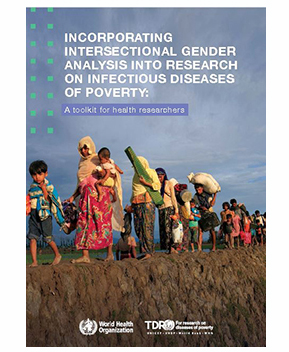 Great progress has been made towards combatting infectious diseases of poverty, most notably through large-scale and coordinated disease control programmes. However, considerable public health challenges remain, including addressing the intersections of gender with other social inequalities that have an impact on health conditions associated with infectious diseases in low- and middle-income countries (LMICs).
Great progress has been made towards combatting infectious diseases of poverty, most notably through large-scale and coordinated disease control programmes. However, considerable public health challenges remain, including addressing the intersections of gender with other social inequalities that have an impact on health conditions associated with infectious diseases in low- and middle-income countries (LMICs).
The next generation of gender research in TDR is prompting researchers to go beyond studying individual social characteristics such as gender, age, (dis)ability, ethnicity, sexual orientation or social status. They are now also exploring how gender interacts with other social variables and how this leads to inequalities within broader structural systems of power and discrimination.
TDR’s gender and infectious disease research efforts are being led by scientist Mariam Otmani del Barrio, who led the development of a TDR strategy on intersectional gender research, launched earlier this year.
This new toolkit supports researchers to:
- understand the importance of gender, sex, and intersectionality in infectious disease and implementation research;
- design, develop and report studies using an intersectional gender lens following a step-by-step guide;
- understand barriers to effective implementation of health interventions to prevent and control infectious diseases; and
- explore solutions to enhance equality in access to health care so that no one is left behind.
An intersectional gender lens enables us to better understand how to develop effective implementation strategies to prevent and control infectious diseases for everyone.- John Reeder, TDR Director
“At TDR, we are working to strengthen an inclusive research agenda, moving away from equating gender with women as a homogeneous category,” Otmani del Barrio says. “We want to study drivers of inequalities that affect the health of women, men, and people who do not fit into these binary identities. This will help us design gender-responsive health interventions to prevent and control infectious diseases.”
The toolkit contains a collection of training modules that can be customized for different contexts. There are two introductory modules, followed by those that mirror the research process in terms of the design and development of the research, data collection, analysis, and reporting and dissemination. Key resources related to specific gender analysis activities are included in each module.
While the toolkit includes a focus on research that prioritizes the prevention and control of infectious diseases of poverty, it is equally relevant to other health research and interventions.

